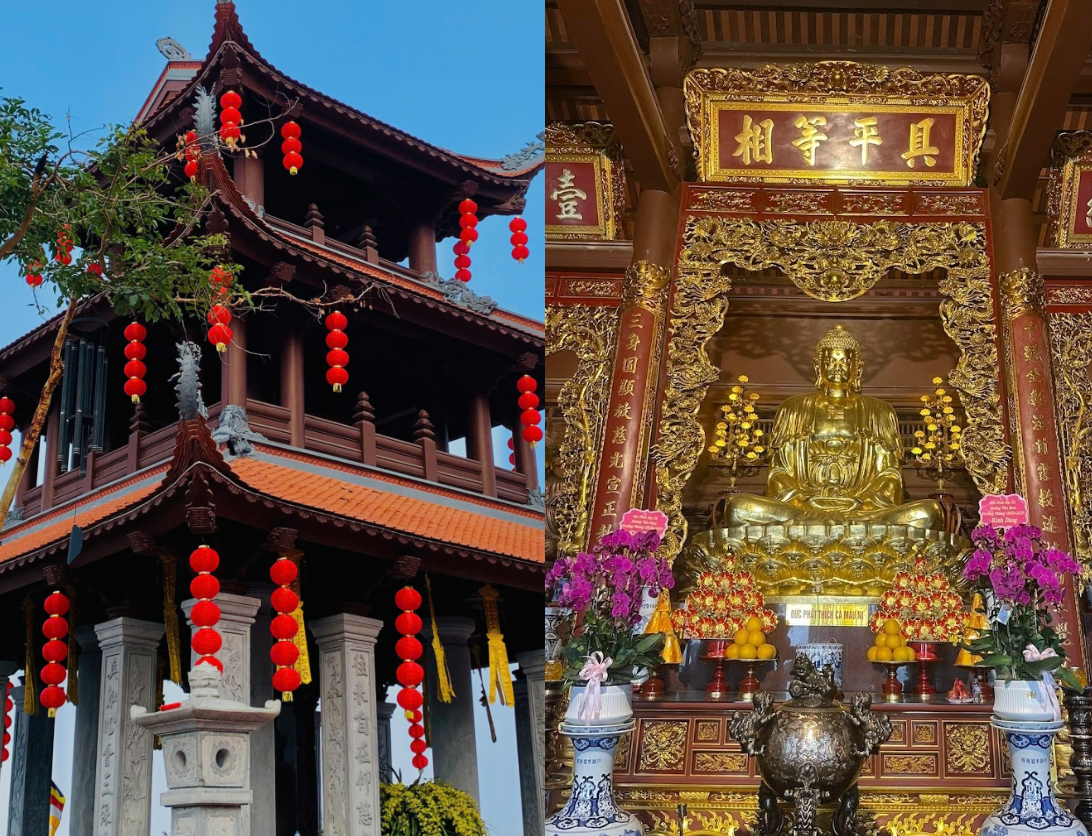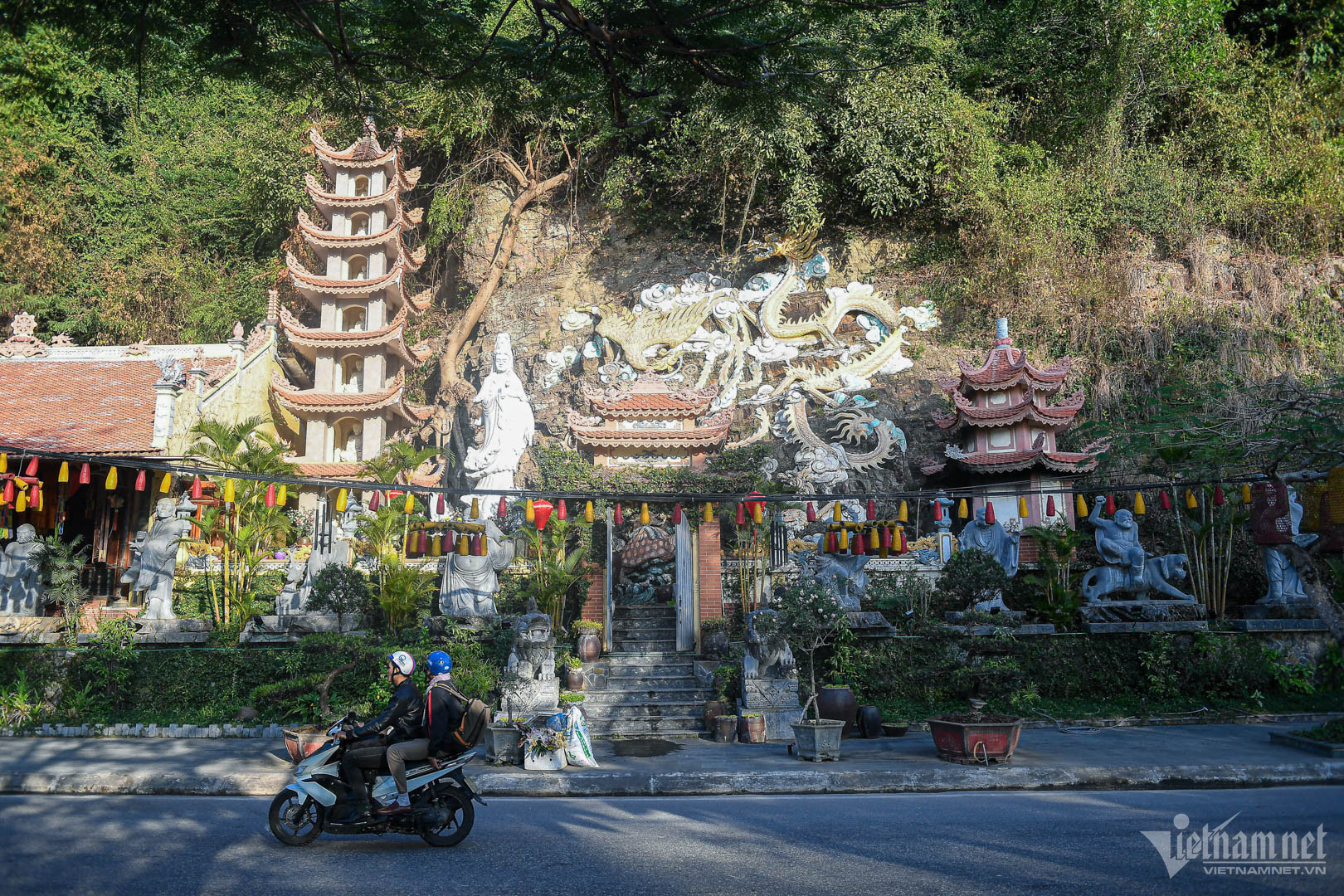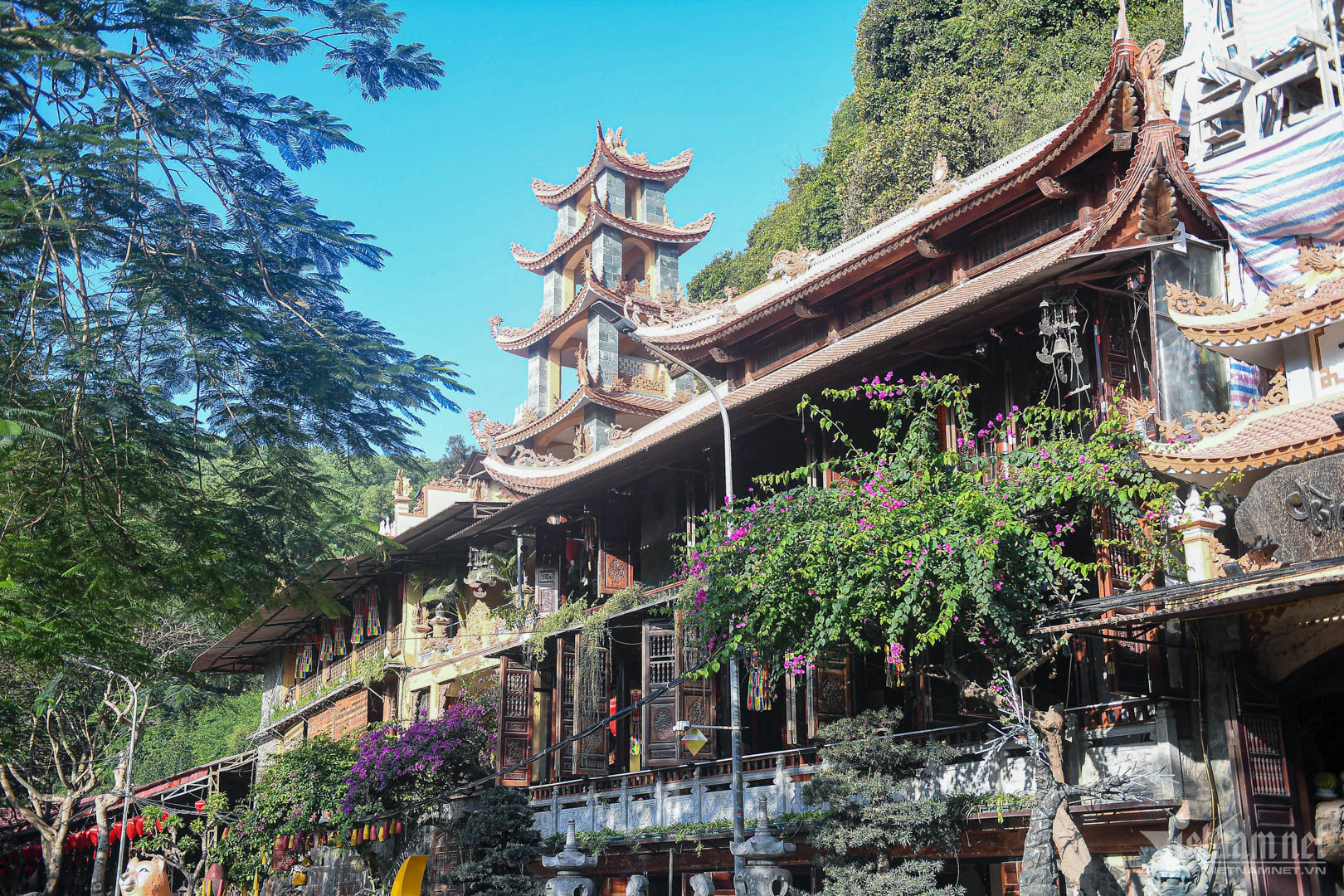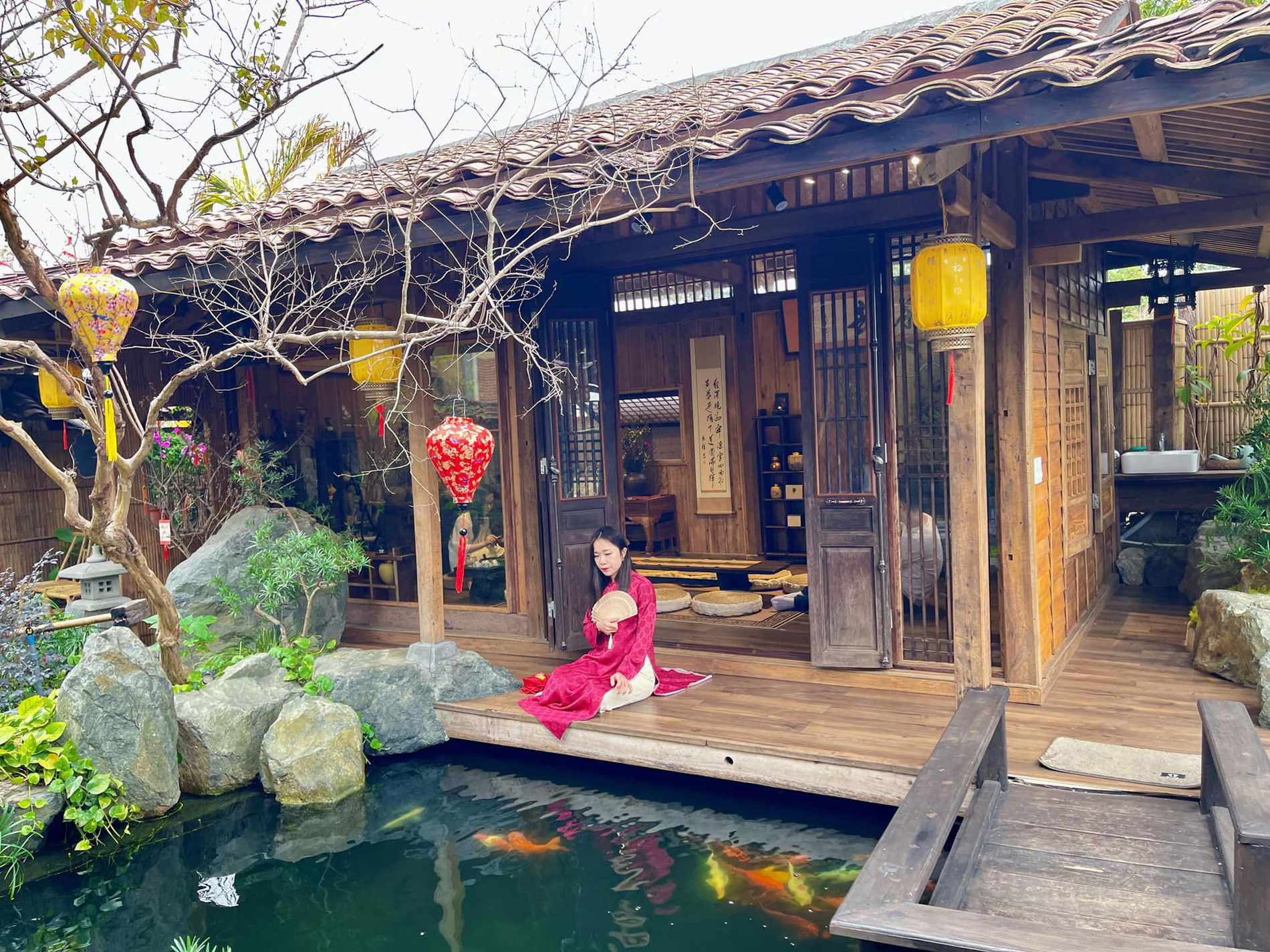Boasting lush landscapes and striking architecture, these three temples in Hai Phong have become top spiritual tourism destinations, attracting visitors from both within and beyond the city.
A temple with Hai Phong’s largest bronze Buddha statue
Located about 20 kilometers from Hai Phong city center, Long Hoa Pagoda in An Lao District is a renowned spiritual site.
According to historical records, Long Hoa Pagoda was built in the 11th century during the Ly Dynasty. Nestled on Chi Lai Mountain within the Elephant Mountain Scenic Complex, the temple endured heavy degradation over time.
In 2017, the pagoda underwent extensive restoration and expansion, transforming it into a spacious spiritual complex covering 7.5 hectares.
Long Hoa is notable not only for its elegant architecture but also for its unique Buddhist statues, including a 5.2-meter cement statue of King Tran Nhan Tong as a monk. Its most iconic feature is the 15-ton bronze statue of Shakyamuni Buddha inside the main sanctuary, currently recognized as the largest bronze Buddha statue in Hai Phong.
Every spring, the temple welcomes thousands of visitors who come to offer incense and pray for peace and fortune, coinciding with the traditional Elephant Mountain Festival.


An ancient cave temple over a thousand years old
Hang Pagoda, formally known as Coc Tu, is located in Zone 1, Van Son Ward, Do Son District. Built into a natural rock cave, the temple sits 35 meters above ground and stretches 25 meters deep, with the inner cave narrowing to just 1.2 meters in height and 1.3 meters in width. Its entrance faces the sea.
Outside the cave stands a statue of Avalokiteshvara Bodhisattva (Guanyin), flanked by an ancestral shrine and a pagoda tower. The mountainside features carvings of dragons and phoenixes, while a turtle and carp statue lie at its base.
The temple retains much of its ancient simplicity, reflected in the single-statue worship setup, stone incense burners, and old stone water jars.
A green stone statue of the temple’s founding monk, Bần, sits serenely on a lotus pedestal, with curled hair buns and elongated ears - posed in the traditional lotus position with his right foot exposed.
One of the temple's rare features is an ancient well, said to have been used by Indian monk Phat Quang during his travels through the region.


A "mini Japan" in Hai Phong
Located about 24 kilometers from the city center, Kim Thien Pagoda - also known as Cat Tien Pagoda - in Quang Trung Commune, An Lao District, is not only a popular spiritual destination but also a favorite “check-in” spot for young travelers.
Recognized as a city-level historical site related to the resistance war in 2004, the temple blends traditional aesthetics with modern appeal.
Covering more than 3,000 square meters, the temple is divided into two main zones. The front features a worship area with Nguyen Dynasty-inspired architecture from the early 20th century, consisting of three ceremonial halls and one main Buddha sanctuary.
The rear section includes a Zen garden and guest quarters, offering a tranquil space with photogenic corners that make it a top destination for visitors. The garden's serene charm has led many to call Kim Thien Pagoda a “miniature Japan” in Hai Phong.
